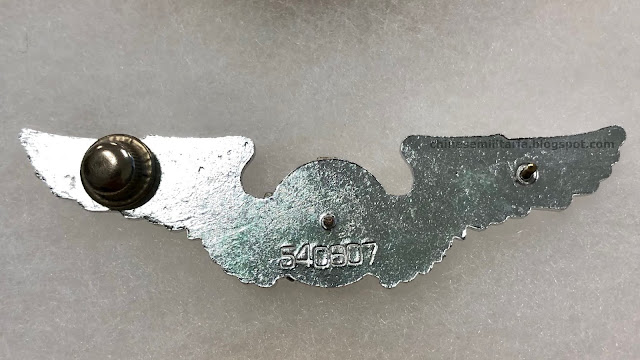Pilot Wings of Republic of China 中華民國空軍徽章
The Chinese Air Force or Republic of China Air Force (ROCAF - 中華民國空軍) of WWII was very limited in planes and pilots right before the Second Sino-Japanese War. Many Chinese-American pilots in the US left to China to help early on with the war effort. In the early 1940s, around 100 American pilots volunteered to go to China to help fight the Japanese before the US officially entered WWII. These pilots were known as the American Volunteer Group or commonly as the Flying Tigers. Hundreds of Chinese pilots were trained in the United States to help fight the Japanese. After the war, the ROCAF grew to a well trained force with assistance from the US Air Force through out the 1950s and 70s. ROCAF pilots few U2 spyplanes to help monitor Communist Chinese activity for the United States. One of the first "kills" of a modern air to air missile technology, the AIM-9 Sidewinder, was used by an F-86 of the ROCAF. Today, a few ROCAF pilots continued to be trained in the US at the same base as their predecessors.
1937-1945
 |
These wings are dated 1945 (卅四年) and with a serial number on the reverse. |
 |
This type was issued to American trained Chinese pilots. It is marked "A.H. Dondero Inc. Wash.D.C." on the reverse. |
Post WWII, Civil War, and Taiwan
 |
| Photography wings 1960s-70s |
 |
| Non Commissioned Officer Engineering wings - this was awarded to an American serviceman in the 1970s |
 |
| Bombardier wings - made by "Hwamei Co." "華美公司" 1950s |
1981 and Current Issues
 |
| Add caption |













Comments
Post a Comment